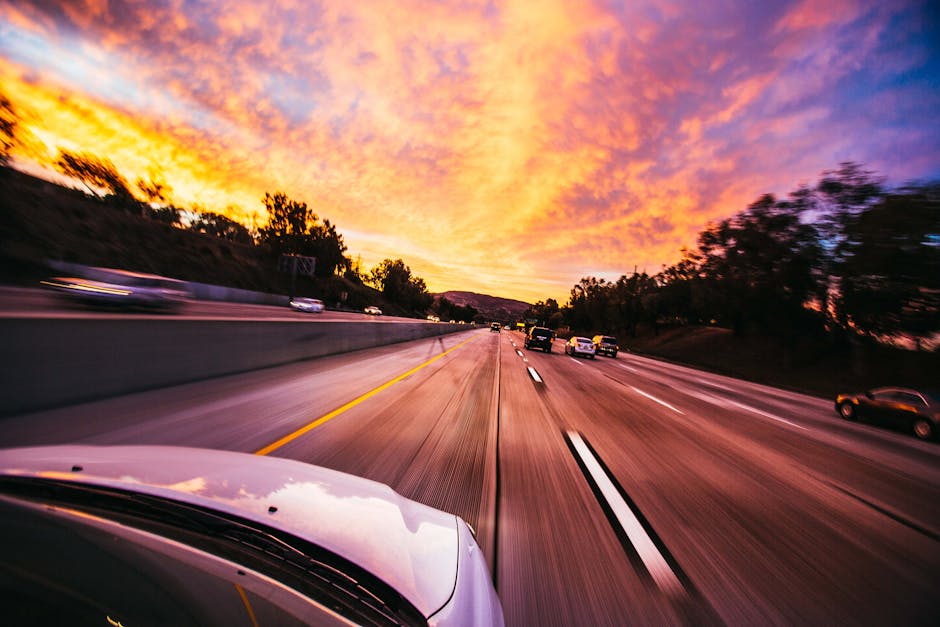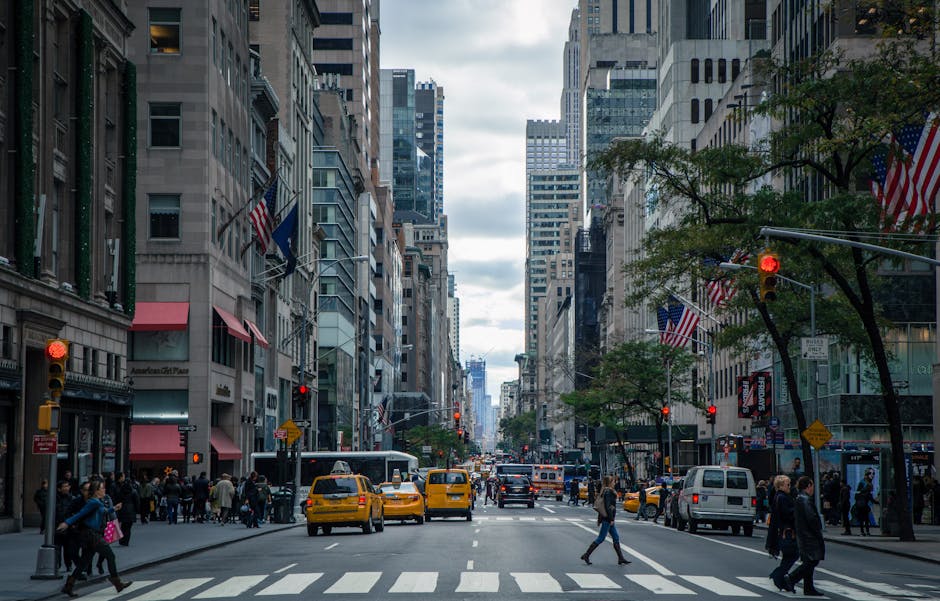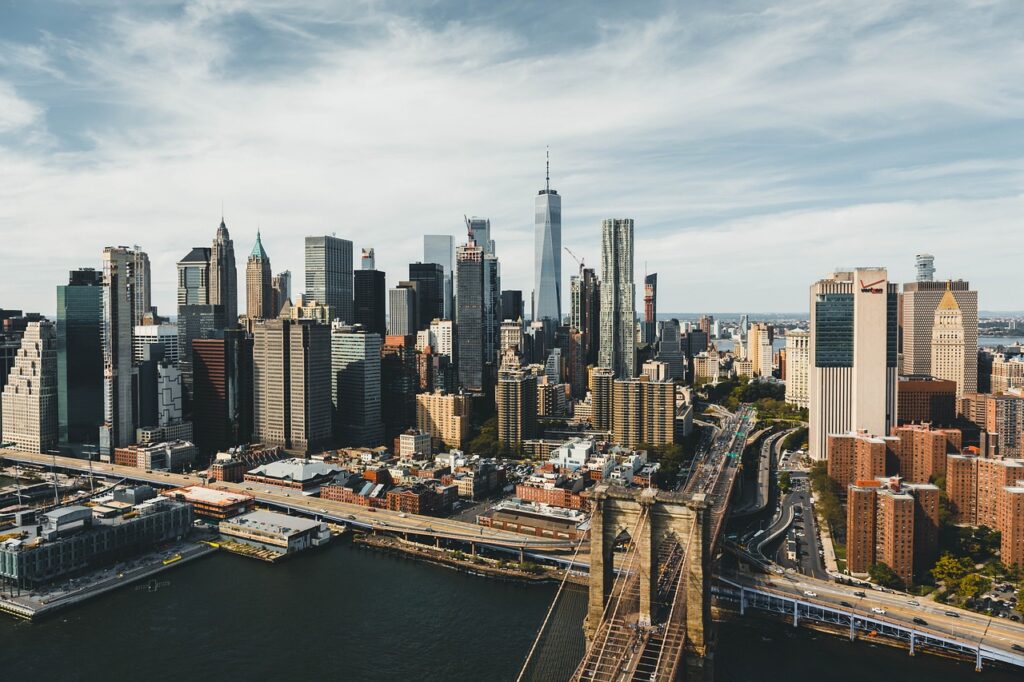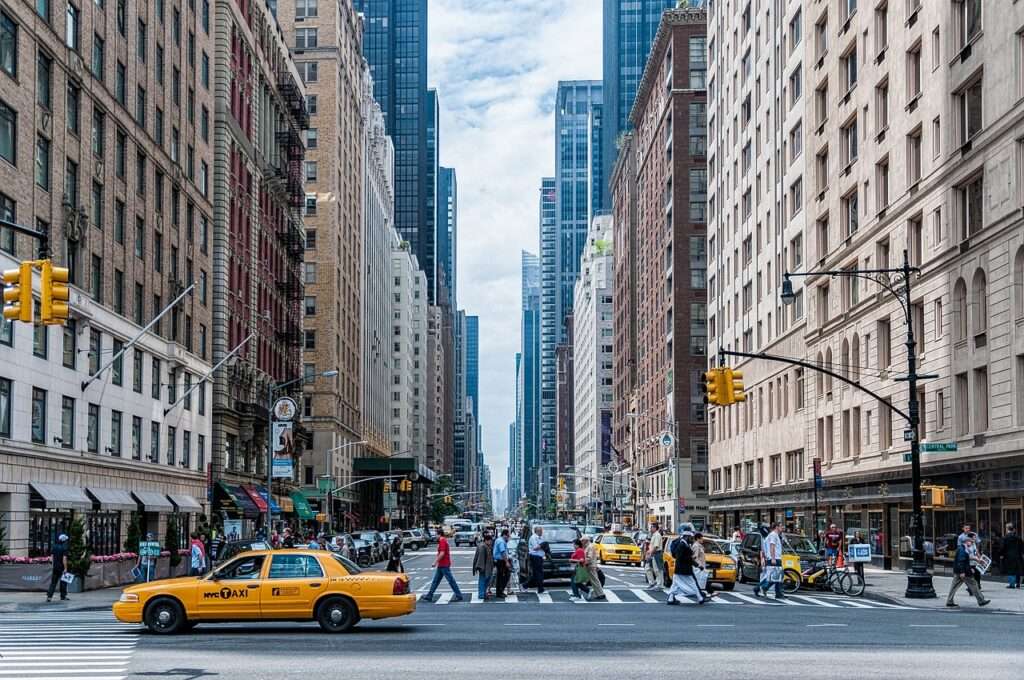The Most Extraordinary Guide to transportation spring valley rockland county nY uSA to manhattan
Introduction
Summary of Transportation Spring valley rockland county NY USA to Manhattan Options
Commuting from Spring Valley in Rockland County to Manhattan opens up several different ways for transportation. Whether you want to have the freedom that comes with driving yourself or take advantage of public transit’s convenience — or even splurge on private transport — this guide will walk you through your options and help you find what suits best. Knowing what’s there is essential for an easy trip into work each day.
Why Go from Spring Valley to Manhattan?
Spring Valley has long been seen as an attractive place to live due its suburban appeal, lower cost of living and strong community spirit amongst residents. Many people who reside here also work in New York City but travel back and forth between both areas regularly either for educational purposes or leisure activities so they can enjoy living somewhere quieter while having access to everything else that comes along with being near such a bustling metropolis. In this guide we will look at various methods one could use when commuting from spring valley to NYC.
Types of Transportation
Driving
Route Alternatives & Distance
Normally taking major highways like Garden State Parkway and George Washington Bridge are involved in driving from Spring Valley down town area all the way upto mid Manhatttan city center where most offices are located . Depending on where exactly one starts off from , this journey covers about 30 miles give or take some few miles as well . Key routes include:
- Garden State Parkway: Connects with I-95 which leads directly onto George Washington Bridge.
- Palisades Interstate Parkway: Another very good alternative route which links up I-95 towards GWB too .

Estimated Time of Journeys
It should be noted that travel times could vary widely due traffic congestion experienced along certain sections during different periods especially rush hours when most workers leave their homes heading into places of work within towns cities suburbs etcetera hence causing.
Pros and Cons of Driving
Advantages:
- Flexibility to leave at any time.
- No transfers needed for the entire journey since it is direct .
- Can carry more luggage or personal belongings.
Disadvantages:
Heavy traffic especially during peak hours which results into delays making one to spend much time on traffic jams before reaching his/her destination within the stipulated period of time. Sometimes even an hour may not be enough if stuck in bad congestions along busy highways like NJ Turnpike etcetera.
Expensive parking fees charged within central business district areas (CBDs) including Manhattan where space is limited hence forcing drivers park their vehicles far away from offices thus requiring them walk long distances between parking lots+office buildings etcetera thus wasting a lot of energy and valuable work hours
Timetable and Frequency: Trains operate at fixed intervals. Metro-North schedule should be checked for further details. More frequently during rush hours, every 30 minutes.
Pricing of Tickets and Discounts: Prices are similar to those of NJ Transit line, about $12 for a one-way ticket. Also available are monthly passes for $250 intended for frequent travelers. Discounts can be given to students, elderly people as well as children.
Duration and Stops: The journey takes approximately 1 hour 30 minutes to get to Grand Central Terminal.
Yonkers: A major station with transfers.
Tarrytown: Another important stop along the route.
Grand Central Terminal: Located at the heart of Manhattan, it offers connections to numerous subway lines.
Buses
Rockland Coaches (Red & Tan Lines)
General information: Spring Valley is directly connected with Manhattan by Rockland coaches which serve daily commuters as well as occasional travelers.
Schedule and frequency of buses: There are frequent services during peak hours but they reduce significantly during off-peak times whereby buses ply after every 20-30 minutes only in the peak hours.
Prices of tickets and discounts offered: $14 is charged for each single trip ticket. Regular passengers can enjoy weekly or monthly discounted rates such that a monthly pass costs around $300 offering unlimited travel privileges within this particular period.
Duration of travel and major stops on route taken: Generally it takes about an hour fifteen minutes depending upon the traffic congestion encountered en-route hence making few stops namely;
Port Authority Bus Terminal being centrally located within Manhattan provides linkage to various subway lines etcetera while;
42nd Street and Eighth Avenue serves conveniently those employees working or visiting midtown areas among others like that…
Coach USA’s ShortLine Bus
Outline; In order minimize on traveling time consumed vis-a-vis convenience maximization sought by clients; ShortLine buses have been designed as such thus becoming another option worth considering especially for commuters mainly.
Frequency and schedule of buses: Regular services are available throughout the day but more frequently so during peak hours i.e. every 30 minutes only in the peak times.
Charges for tickets and applicable discounts: It costs roughly $14 per person for one way travel hence similar pricing strategy is employed by Rockland coaches company. However; monthly passes can be obtained at a slightly higher fee than that charged by red & tan lines e.g.$300 while targeting frequent travelers also less priced fares often exist on conditions to seniors, students or children etcetera…
Travel time taken with major locations stopped at included ; Approximately it takes about an hour fifteen minutes between origin destination points located within Manhattan whereby key stops include Port Authority Bus Terminal among others like this…
Private Transportation Services
JetBlack Transportation
Outline: Private car services provided by JetBlack Transportation are designed specifically around customers’ preferences thus making their trips comfortable and stress free since they offer premium luxurious means of commuting where each client has got a chance to be served according to his/her taste including having professional drivers accompanied with high quality vehicles as well.
Services:
Pickup & drop off service : Whether going from home/work or any other place, pick up can always be arranged so that you get where you need to go conveniently without much hassle involved during your journey towards desired destination point.
Professional drivers : Being experienced in driving people around city safely, these chauffeurs know how best drive along different routes without causing accidents thereby ensuring safety all through your trip with us.
Luxury vehicles : Fleet comprises top end cars such as limousines among others which ensure that passengers enjoy themselves while traveling since such kinds of automobiles are designed provide comfortability throughout entire rides made via them where even backseat space is adequate enough allow people stretch legs comfortably whenever necessary therefor giving them chance relax fully until reaching required location spot without experiencing any form discomfort whatsoever.
Booking and Pricing: Visit JetBlackTransportation.com for booking options and pricing details. Depending on the type of vehicle and service needed, rates may vary but expect to pay more for convenience and luxury.
Pros and Cons of Private Transportation
Advantages:
- Great comfort as well as convenience.
- Customized services that fit into your schedule.
- Punctuality combined with reliability.
- No need to worry about parking or driving through busy streets.
Disadvantages:
- Higher costs in comparison with public transit.
- During peak hours availability becomes limited unless booked earlier on.
Alternative Modes of Transportation
Ride-Share Services
Synopsis: Uber and Lyft are well-known ride-sharing services that offer convenience and flexibility. They can be very helpful for last-minute trips or when public transit is not easily accessible.
Price Comparison: While prices may fluctuate due to demand, it is generally more costly to use a ride-sharing service than public transportation. During peak hours, surge pricing can greatly increase the cost.
Availability and Convenience: Ride-share services are easy to find especially during rush hours. All you have to do is download their mobile app and book your ride; you can track your driver in real-time.
Pros:
- The convenience of door-to-door service
- Flexibility to travel whenever necessary
- Opportunity to share rides with others and split costs
Cons:
- More expensive during peak times
- Surge pricing leading to unexpectedly high fares
Carpooling & Vanpooling
Advantages: Carpooling and vanpooling are both environmentally friendly and cost-effective. It helps decrease traffic congestion which in turn reduces emissions by removing some cars from the road.
Platforms: Zipcar, regional carpool programs, local community boards along with online groups all provide means of facilitating carpooling or vanpooling arrangements.
Environmental Effects: Since car-poolers occupy fewer vehicles there is less carbon dioxide pumped into the atmosphere through these modes of shared transportation thus reducing environmental impact.
Pros:
- Fuel savings on gas/tolls/insurance etc..
- Lower carbon footprint left behind from individual drivers using less fuel per mile traveled compared against those driving alone (or)
- Chance for people who commute together daily – often coworkers –to socialize with one another during an otherwise monotonous part of their day!
Cons:
- Less flexibility on departure times compared against driving alone;
- Must rely upon other people being punctual;
Cycling
Feasibility: The whole distance between Spring Valley and Manhattan might not be cycled by most riders because of long distance and difficult terrain. However, it is a fantastic option for short distances within Spring Valley or Manhattan – especially as the last mile!
Safe Cycling Routes: Find safer ways to ride your bike by utilizing marked paths or lanes on some streets.
Health Benefits: Physical fitness is promoted through cycling which also helps in relieving stress thus contributing towards overall well-being.
Pros:
- Regular exercise promotes good health;
- Environmentally friendly;
- Saves money on fuel costs and public transportation fares;
Cons:
- Not suitable for long-distance commuting;
- Weather-dependent;
- Requires appropriate gear such as helmets, lights at night etc..
Planning Your Commute
Choosing the Best Time to Travel
Peak vs. Off-Peak Travel Times: Consider traveling during off-peak hours because this can save you a lot of time and trouble. During peak hours, there tends to be more traffic congestion which affects both drivers and those who use public transportation.
Traffic & Transit Schedules’ Impact: Use real-time traffic apps like Google Maps or Waze along with Transit app so that they give information about current traffic condition as well as when next bus/train shall arrive at particular stop respectively.
Weather Considerations
Different Modes Affected: Driving might become dangerous due to poor road conditions caused by bad weather while certain types of public transit services could be delayed/cancelled altogether when extreme weather events occur e.g., heavy rainstorms; snowstorm etc..
Tips for Various Weather Conditions: Dress appropriately for the occasion (warm clothes if cold), check weather forecasts before setting out on your journey and consider alternative route(s) or mode(s) of transport if necessary e.g., walking instead of taking buses during snowfall.
Cost Comparison between Different Methods
In-Depth Analysis: Compare driving costs against those incurred while using public transport systems; add up toll charges paid each way plus parking fees besides fuel consumption per mile traveled via private car then compare this with ticket prices offered by various modes such as train, bus etc..
Long-Term Cost Implications: Take into account potential long-term savings resulting from choosing one commuting option over another. For instance, monthly passes for public transit can be more economical than buying daily tickets; carpooling saves fuel costs and tolls but frequent use of ride-sharing services may become expensive.
Tips for a Smooth Ride
Time Management Techniques
Efficient Management: Plan your path and leave early to avoid traffic jams. Use transit applications to track timetables and road conditions, allowing for unknown delays.
Tools and Apps: Waze, Google Maps, Transit etc can be used to save you commute time. These tools supply updates in real-time enabling you to skip traffic thus keeping you punctual.
Safety Hints
Personal Protection: Be conscious of your environment, particularly while using public transportation systems. Observe safety measures and take care when moving around unfamiliar places. Keep personal items safe and avoid distractions.
Safe Driving Habits: Stick to driving rules; don’t use mobile devices or fail to maintain the vehicle properly. Regularly inspect brake pads as well as tire pressure together with fluid levels. Drive steadily during poor weather conditions such as rain or snowfall while ensuring more space between vehicles before stopping abruptly.
Frequently Asked Question
Which is the fastest way to travel from Spring Valley to Manhattan?
Usually, the quickest route is dependent upon peak hours plus current traffic trends. However, NJ Transit trains alongside Rockland Coaches buses are reliable choices taking about an hour each way but this can be shorter if there’s no congestion. Conversely driving sometimes takes less time especially off-peak though it largely depends on how congested roads are.
How much does a monthly train pass cost?
Typically NJ Transit charges approximately $250 per month which allows unlimited trips within specific zones only whereas Metro-North Railroad offers the same at about $250 too but they have different zones from those covered by NJT so one has to decide based on their daily needs with savings being realized if travelling frequently.
Are there any student or senior discounts available?
Certainly, both NJT as well MNR give price reductions for students while elderly persons also benefit from lower fares during non-rush hours set aside mainly for them hence important always checking related websites in order not miss out on such opportunities.
What are some good commuting apps?
Waze, Google Maps, Transit and NJ Transit’s app are all great for getting updates on real-time conditions so these would be my best picks when it comes to precise commute planning.
Conclusion
Summary of the most important things to remember
Selecting an appropriate travel method lies with one’s own convenience, spending plan and timetable. Analyze each possibility i.e., private companies like JetBlack Transportation as well as driving versus public transportation etc., keeping in mind that planning beforehand coupled with using live-tracking applications while staying mindful about timings plus road situations can greatly enhance overall experience during peak hours or off-peak journeys.
Looking Forward
Upcoming advancements in transport infrastructure alongside technological advancements could provide additional conveniences. The future looks bright for commuters given self-driving cars among other trends which will revolutionize how people get around cities hence always keep yourself informed about such developments since they could significantly affect your daily routine positively by cutting down travel times between Spring Valley and Manhattan.





